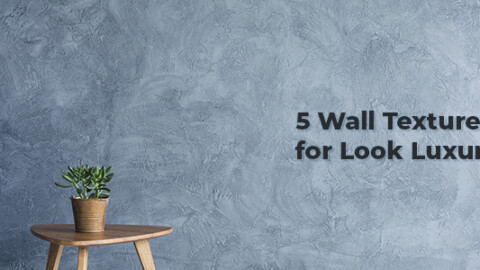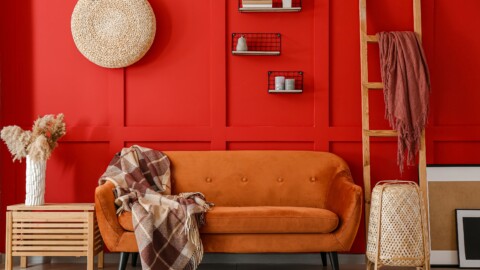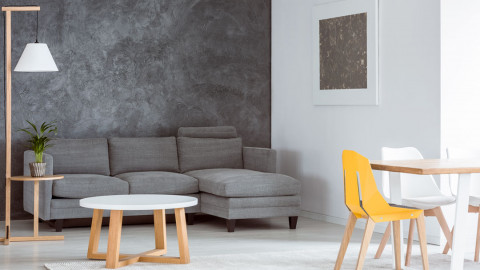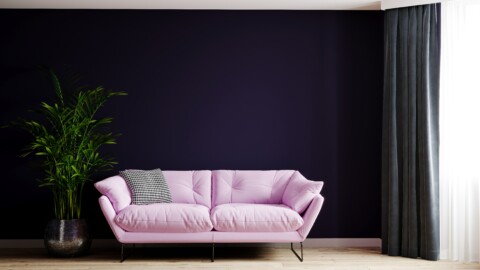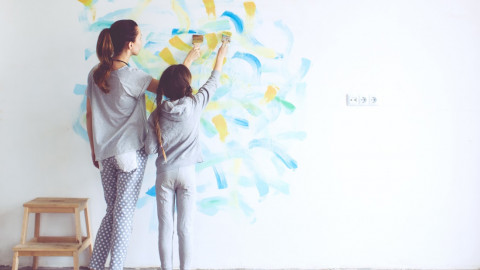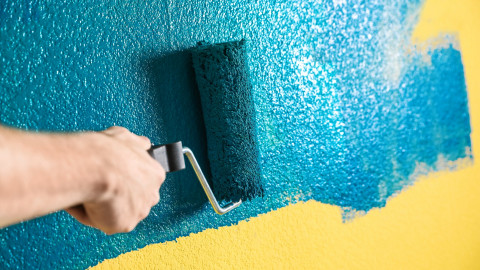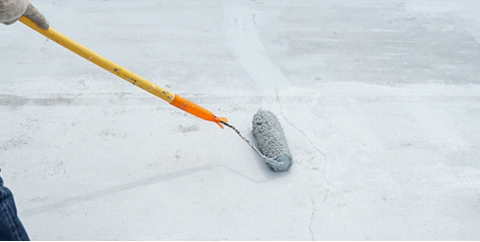School environments play a crucial role in shaping the minds and spirits of students. One effective way to create a stimulating and positive atmosphere is through creative wall paintings. Well-designed murals and art can inspire students, boost their mood, and make learning spaces more engaging. In this comprehensive guide, we will explore various wall painting ideas that can transform dull school walls into vibrant canvases of creativity and inspiration.

Power of Art in Education
Art has the unique ability to influence emotions, provoke thoughts, and inspire creativity. In educational settings, wall paintings can:
Enhance the learning environment: Bright, colorful walls can make classrooms and hallways more inviting and pleasant.
Encourage creativity and imagination: Art can stimulate students’ creativity, helping them think outside the box.
Improve concentration and productivity: Visually appealing environments can boost students’ focus and engagement.
Foster a sense of community and belonging: Murals reflecting the school’s values and diversity can instil pride and unity among students.
1. Educational Murals
Educational murals are a fantastic way to combine learning with visual stimulation for kids. These paintings can cover a wide range of subjects and concepts, making learning more interactive and fun. This is the type of painting best for elementary schools.
a. Science and Nature
Murals depicting scientific concepts, like the solar system, the human body, or the water cycle, can serve as visual aids in classrooms and hallways. A nature-themed mural with plants, animals, and ecosystems can spark interest in biology and environmental science.
b. Historical Timelines
Creating a historical timeline mural can help students visualize key events in history. This could include significant global events, the history of the local community, or milestones in the school’s own history.
c. Mathematical Concepts
Creating a historical timeline mural can help students visualize key events in history. This could include significant global events, the history of the local community, or milestones in the school’s own history.
2. Inspirational Quotes and Portraits
Quotes from famous leaders, scientists, and artists can provide daily motivation for students. Pairing these quotes with portraits or symbolic imagery can make them even more impactful for students and kids.

a. Motivational Quotes
Select quotes that encourage perseverance, creativity, and self-belief. These can be painted in bold, eye-catching fonts on classroom walls, hallways, or the school entrance.
b. Portraits of Inspirational Figures
Portraits of figures like Albert Einstein, Maya Angelou, Mahatma Gandhi, and Malala Yousafzai can inspire students to dream big and strive for greatness. These portraits can be stylized to match the overall aesthetic of the school.
3. Cultural & Community Art
Celebrating cultural diversity through wall paintings can promote inclusivity and respect among students. Murals reflecting various cultures, traditions, and festivals can educate students about the world’s rich diversity.
a. Multicultural Themes
Incorporate elements from different cultures, such as traditional clothing, festivals, and landmarks. This can be particularly effective in schools with a diverse student body.
b. Local Community Art
Murals that highlight the local community’s history, landmarks, and notable figures can foster a sense of pride and connection among students. This can include famous buildings, local wildlife, or significant historical events.
4. Artistic Expression
Encouraging artistic expression through wall paintings can be both a fun activity and a way to showcase students’ talents.
a. Student Art Projects
Allow students to contribute to the school’s wall art. This could be through collaborative murals, individual pieces displayed in a gallery format, or a rotating exhibit of student artwork.
b. Interactive Murals
Interactive murals, such as chalkboard walls or paint-by-numbers designs, can engage students directly. These walls can be periodically updated, providing a dynamic and evolving canvas.
5. Environmental Awareness
Murals promoting environmental awareness can educate students about the importance of sustainability and conservation

a. Eco-Themed Murals
Design murals that depict themes like recycling, renewable energy, and wildlife conservation. These can serve as daily reminders of the importance of protecting the environment.
b. Garden and Nature Scenes
Murals with lush gardens, forests, or underwater scenes can create a calming atmosphere and highlight the beauty of nature. These paintings can be particularly effective in outdoor areas or near school gardens.
6. School Spirit and Values
Murals reflecting the school’s values, mascot, and achievements can boost school spirit and create a sense of unity.
a. School Mascot and Colors
Incorporate the school’s mascot, colors, and logo into the murals. These can be placed in prominent areas like the gymnasium, cafeteria, or main entrance.
b. Core Values and Mission
Highlight the school’s core values, such as respect, responsibility, and integrity, through meaningful and artistic representations. This reinforces the school’s mission and encourages students to embody these values.
Step-by-Step Guide to Implementing School Wall Murals
1. Assess the Space:
Evaluate the areas in the school that would benefit from murals. Consider hallways, classrooms, the library, the cafeteria, and outdoor spaces.
2. Choose a Theme:
Decide on themes that align with the school’s educational goals, values, and aesthetics. Involve teachers, students, and parents in the decision-making process.
3. Design the Murals:
Work with professional artists, art teachers, or students to create detailed designs. Ensure the designs are appropriate for the space and age group.
4. Gather Materials:
Obtain all necessary materials, including paints, brushes, sealants, and protective gear. Use high-quality, non-toxic paints suitable for indoor and outdoor use.
5. Prepare the Surface:
Clean and prime the walls to ensure the paint adheres properly. Repair any cracks or damage before starting.
6. Start Painting:
Begin with the background colors and large areas, then move on to details and finer elements. Allow each layer to dry before adding more details.
6. Protect the Murals
Apply a protective sealant to preserve the murals and prevent damage. Regular maintenance and touch-ups may be required to keep the murals looking fresh.
Conclusion,
Creative wall paintings can transform the atmosphere of a school, making it a more inspiring, engaging, and enjoyable place for students to learn and grow. From educational murals to artistic expressions and eco-themed designs, the possibilities are endless. By incorporating meaningful art into the school environment, educators can create a lasting impact on their students’ educational journey.
So, why wait? Start planning your school’s wall mural project today and watch as the vibrant colors and imaginative designs bring new life and energy to your educational spaces.
FAQ
How can murals be educational?
Educational murals can depict scientific concepts, historical timelines, mathematical equations, and more, serving as visual aids that make learning more interactive and fun.
2. What types of paint are best for school murals?
Use high-quality, non-toxic, and durable paints that are safe for indoor and outdoor use. Acrylic paints are commonly used for their versatility and vibrant colors.
3. How do you maintain school murals?
Regularly clean the murals to remove dust and dirt. Apply a protective sealant and perform touch-ups as needed to keep the murals looking fresh and vibrant.
4. Can students participate in painting the murals?
Yes, involving students in the painting process can be a great way to foster a sense of ownership and pride. Consider organizing collaborative mural projects or allowing students to contribute individual pieces.
5. How long does it take to complete a mural?
The time required to complete a mural depends on its size, complexity, and the number of people involved. It can range from a few days to several weeks.


